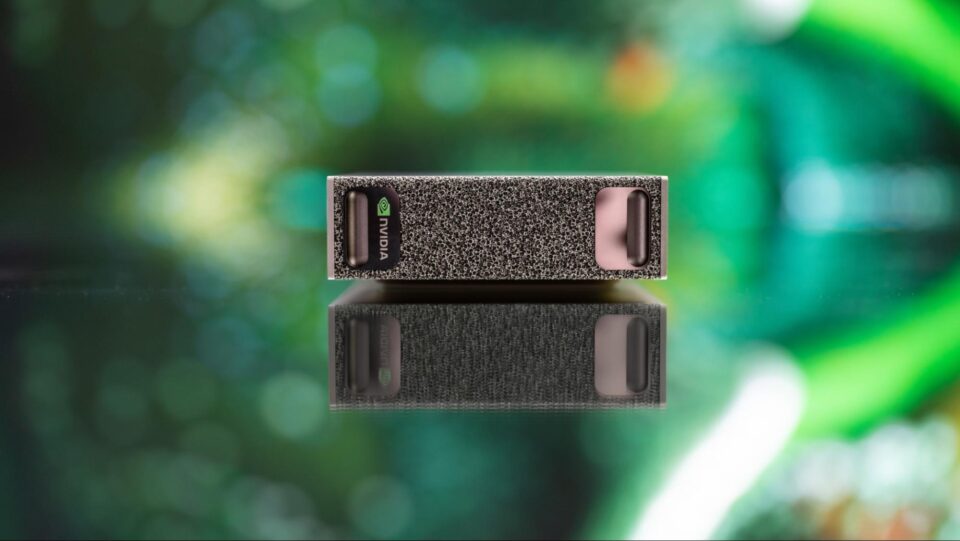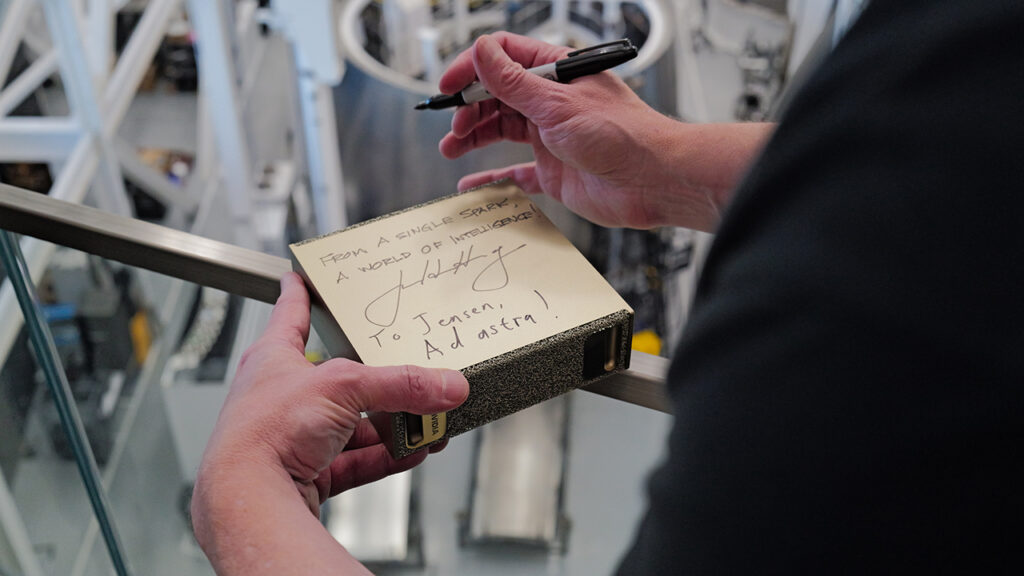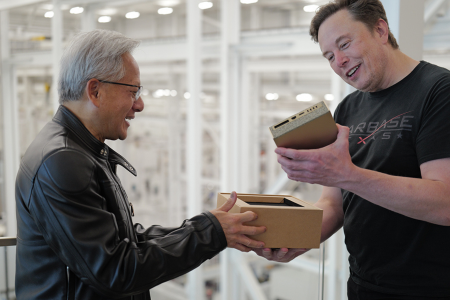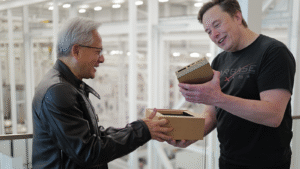In a remarkable convergence of technological innovation, Elon Musk, the visionary behind SpaceX, and Jensen Huang, the CEO of NVIDIA, recently met at SpaceX’s Starbase rocket factory in Texas. This meeting, captured in a video shared by Musk on X (formerly Twitter), underscores the deepening synergy between artificial intelligence (AI) and aerospace engineering, two fields that are increasingly interdependent in the quest for a multi-planetary future.
The video, which has garnered significant attention, features Huang recounting a pivotal moment from 2016 when he announced the NVIDIA DGX-1, the world’s first AI supercomputer. At the time, the industry response was muted, with Huang humorously noting, “It was just crickets.” However, Musk, ever the forward-thinker, recognized the potential of the DGX-1 and became its first customer. This decision not only validated NVIDIA’s vision but also set the stage for a decade-long partnership that has profoundly influenced both companies’ trajectories.
Huang’s visit to Starbase was not merely nostalgic; it was a celebration of progress. He presented Musk with the latest iteration of NVIDIA’s AI hardware: the DGX Spark, a compact, desktop-sized supercomputer that boasts five times the computational power of the original DGX-1 while consuming significantly less energy—40 watts compared to 4,000 watts. This leap in efficiency and performance is powered by NVIDIA’s Grace Blackwell architecture, making the DGX Spark a game-changer for AI researchers, developers, and data scientists worldwide.

The exchange between Musk and Huang in the video is laden with significance. Huang jests about building “bigger things” than Musk, referring to NVIDIA’s enormous data centers, while Musk counters with the scale of SpaceX’s rockets. This playful banter masks a deeper truth: both leaders are pushing the boundaries of what technology can achieve, whether it’s launching humans to Mars or enabling AI to solve complex global challenges.
For Musk, the DGX-1 was more than just a piece of hardware; it was a critical component in Tesla’s autonomous driving technology and xAI’s mission to accelerate human scientific discovery. The DGX-1’s capabilities allowed Tesla to train its AI models for self-driving cars, a venture that has since become a cornerstone of the company’s strategy. Similarly, xAI, Musk’s AI-focused venture, has leveraged NVIDIA’s technology to develop Grok, an AI chatbot designed to assist in understanding the universe—a mission that aligns closely with Musk’s broader vision.
The 2025 meeting at Starbase is particularly timely, occurring amidst a surge in AI innovation. NVIDIA’s stock has soared, driven by demand for its AI chips, while SpaceX continues to make headlines with successful Starship test flights. The 11th test flight of Starship, which took place just days before Huang’s visit, demonstrated the rocket’s reusability and its potential to transport humans and cargo to the Moon and Mars. Huang, witnessing his first rocket launch in person, described the experience as “incredible,” further solidifying the bond between the two companies.
This intersection of AI and rocketry is not coincidental. AI is increasingly integral to SpaceX’s operations, from optimizing launch trajectories to managing the complex logistics of interplanetary travel. Conversely, SpaceX’s advancements in rocket technology provide a testing ground for AI applications in extreme environments, such as the harsh conditions of space. The collaboration between Musk and Huang exemplifies how cross-disciplinary innovation can accelerate progress in multiple domains.
The video also highlights the personal rapport between Musk and Huang, a relationship built on mutual respect and a shared commitment to technological advancement. Huang’s delivery of the DGX Spark to Musk is symbolic, representing not just a product handover but a continuation of a decade-long partnership that has seen both companies evolve from niche players to global leaders. The handwritten note on the DGX Spark box, “From a single spark, a world of intelligence,” encapsulates this journey.

For Sri Lankan audiences, particularly those engaged in technology and entrepreneurship, this story offers valuable lessons. It demonstrates the importance of visionary leadership and the willingness to take risks on emerging technologies. Musk’s early adoption of the DGX-1, despite industry skepticism, underscores the value of foresight in innovation. Similarly, Huang’s persistence in developing AI hardware, even when initial market response was lackluster, highlights the resilience required to push technological boundaries.
Moreover, the collaboration between SpaceX and NVIDIA serves as a model for how partnerships can drive innovation. In Sri Lanka, where the tech startup ecosystem is rapidly growing, such alliances could be instrumental in scaling local innovations to global markets. The story of Musk and Huang is a reminder that breakthrough technologies often emerge at the intersection of diverse fields, requiring collaboration across industries.
The implications of this meeting extend beyond the immediate technological advancements. As AI becomes more pervasive, its ethical and societal impacts are increasingly scrutinized. Musk has been vocal about the need for AI regulation, a stance that aligns with his broader concerns about technology’s role in shaping humanity’s future. Huang, too, has emphasized responsible AI development, ensuring that NVIDIA’s products are used to enhance human capabilities rather than replace them.
In conclusion, the meeting between Elon Musk and Jensen Huang at SpaceX’s Starbase is a testament to the power of collaboration in driving technological innovation. It highlights the transformative potential of AI in aerospace and beyond, offering a glimpse into a future where humans can explore the stars with the aid of intelligent machines. For audiences in Sri Lanka and around the world, this story is a call to embrace interdisciplinary approaches and bold visions, recognizing that the next great leap forward may well come from the unlikeliest of partnerships.





